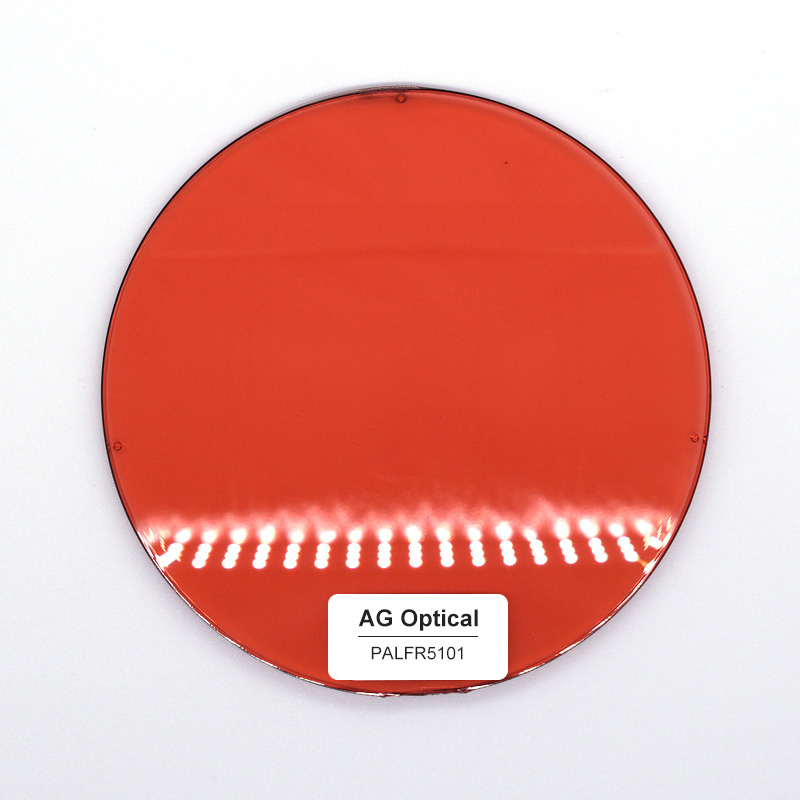Types of resin lenses
CR-39
This material is the abbreviation of propylene diethylene glycol carbonate, also known as Columbia resin or ADc resin, which is a thermosetting material. Its physical properties are:
1 Refractive index (Nd23℃) 1.498
2 Abbe number 53.6
3 transmittance 92%
4 Specific gravity 1.32g/cm³
5 Heat distortion temperature 140℃
6 Rockwell hardness M100
7 Thermal expansion coefficient 9~10x10-5/℃
CR-39 material also has the advantages of easy dyeing, impact resistance and good chemical stability. It was developed by the American PPG company in the 1970s and developed rapidly since then. my country began to produce this product in the 1980s. The lenses made of this material are most suitable for the refractive correction of primary and secondary school students and children, as well as the application of labor protection glasses and reading glasses.

PM MA
Commonly known as plexiglass, namely polymethyl methacrylate, is a thermoplastic material. Its physical properties are:
1. Refractive index (Nd23℃) 1.49
2. Abbe number 57.4
3. The transmittance is 92%
4. Specific gravity 1.19g/cm³
5. Heat distortion temperature 65~100℃
6. Rockwell hardness M80~100
7. Impact toughness 2.2~2.8 KJ/m²
8. Thermal expansion coefficient 7×10-5/℃
9. Saturated water absorption rate 2%
PMMA is soluble in chloroform, alkane dichloride, acetone, benzene and formic acid, but insoluble in water, methanol, ethanol and gasoline. PMMA has the advantages of light weight and low price, and it is easy to be molded, especially injection molding, which can be mass-produced. Since the 1950s, spectacle lenses have been produced, but they have not been widely promoted in the spectacles industry because they are easily deformed by heat and have extremely poor wear resistance. Today, it is mostly used for low-end sunglasses lenses.
PC
That is, polycarbonate, which is a thermoplastic material. The physical properties are:
3.1 Refractive index (Nd23℃) 1.585
3.2 Abbe number 30.3
3.3 transmittance 89%
3.4 Specific gravity 1.2g/cm³
3.5 Thermal deformation temperature 120~140℃
3.6 Rockwell hardness M70~118
3.7 Impact toughness 80~100KJ/m2
3.8 Thermal expansion coefficient 6.6x10-5/℃
3.9 Saturated water absorption rate of 0.4%
This material is transparent, slightly yellow, not easy to color, rigid and tough, and has a particularly high impact strength, which is more than 10 times that of CR-39, and ranks among the best in thermoplastic materials. The design can be very thin, and the center thickness is ≥1.0mm , the ball drop test was negative. It has good stability to heat, thermal energy radiation, air and ozone.
And the ultraviolet rays below ~385nm are all absorbed, which can be called real safety lenses. In addition, it has high heat resistance, oil, grease and acid resistance, low water absorption, high dimensional stability, and it is an environmentally friendly material that can be used countless times.
In the US many call it the dominant lens of the 21st century. The disadvantages are high stress, easy cracking, poor compatibility with other resins, large friction coefficient, and no self-lubricating properties. It is difficult to process. At present, only sunglasses and flat mirrors can be produced in China, and optical lenses also rely on imports. Many people in the industry are optimistic about this material and believe that in a few years, PC sheets will dominate China's spectacle lens market.
